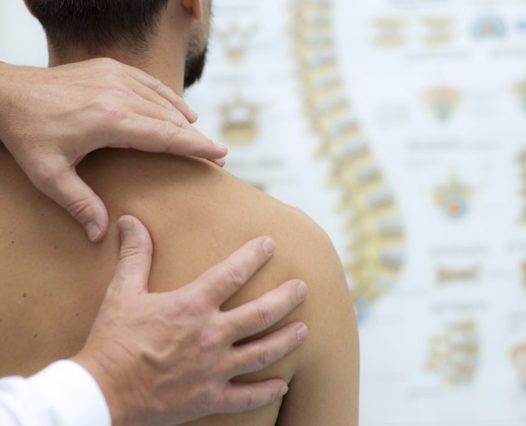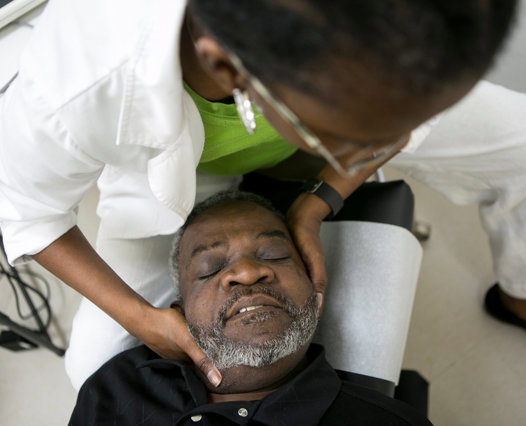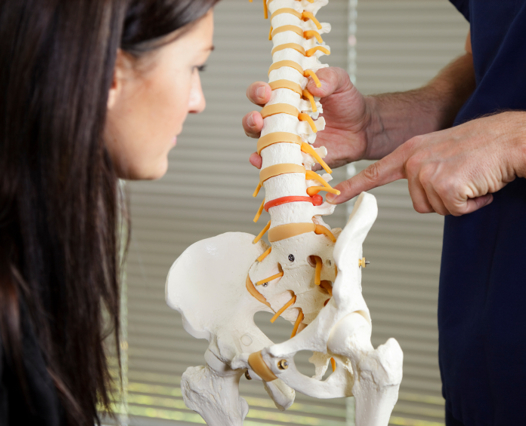

Brookdale Hospital
One Brookdale Plaza,
3rd Floor, CHC Building, Brooklyn, NY 11212
Phone: 718-240-5995
Fax: 718-240-5408
PM&R / Musculoskeletal @ Brookdale
One Brookdale Plaza,
2nd Floor of CHC, Station S Brooklyn, NY 11212
Phone: 718-240-6469
718-240-8349
Fax: 718-240-5570
Kingsbrook Hospital
585 Schenectady Avenue,
2nd floor, DMRI building,
Brooklyn, NY 11203
Phone: 718-604-5322
Fax: 718-363-6596
Interfaith Hospital
Bishop Walker Clinic
528 Prospect Place,
3rd floor Suite A,
Brooklyn, NY 11238
Phone: 718-613-6903
Fax: 718-228-7064
One Brooklyn Health is the NYS Department of Health-approved co-operator of Brookdale University Hospital Medical Center, Interfaith Medical Center, and Kingsbrook Jewish Medical Center. All three medical centers have long, historical ties to their communities. We aim to preserve and enhance access to healthcare services in Brooklyn by merging the separate hospitals and their governed affiliates into a sustainable, quality integrated health system.
Patients suffering from acute and chronic painful conditions can take advantage of a comprehensive approach to treating pain, from a conservative to a more advanced interventional approach including injections or spinal cord stimulators. While being aware that pain may not always be cured despite the best available treatment, the ultimate goal of our practice is to work together with the patient to tailor an effective treatment plan to manage pain, restore function and improve quality of life.
Whether you are recovering from a medical, cancer, neurologic, cardiac, vascular, pulmonary and/or orthopedic ailment or surgery, our physical rehabilitation facilities will help get you moving as quickly and safely as possible so you can feel your best. We also provide outpatient rehabilitation services at our Kingsbrook Rehabilitation Center and inpatient services at Brookdale and Interfaith Hospitals, which offers programs to support patients and their caretakers.
Attendance to any of our specialized areas requires a physician generated referral or prescription.
Explore medical providers and find rehabilitation locations across Brooklyn closest to you.
About Our Clinics:
Physical Medicine & Rehabilitation (PM&R) Clinic:(Kingsbrook, Brookdale, Interfaith)
Our clinics are designed to evaluate and treat patients with a host of medical conditions both congenital and acquired. Such medical conditions include stroke, spinal cord injury, traumatic brain injury, rheumatologic disorders, degenerative disorders, musculoskeletal, neuromuscular disorders, movement disorders to name a few. Whether the patient is 18 or 80, we provide one-on-one care for our patient population.
Pain Management Clinic: (Kingsbrook)
For patients suffering from acute and chronic painful conditions like head and neck pain, back pain, herniated disc, myofascial pain syndrome, complex pain syndrome, failed back surgery syndrome, radiculopathy, facet related pain, fibromyalgia and more, are treated here in the clinic. We offer non-surgical approach to pain management such as epidural steroid injection, nerve ablation, spinal cord stimulation, joint injections, and nerve blocks. Medication is also used to obtain relief, as well as treatment modalities from our licensed Physical and Occupational Therapy staff.
Wheelchair Clinic:(Kingsbrook)
We recognize the need to ensure that patients remain mobile at home and active within their communities to prevent further health-related complications. Patients are evaluated utilizing a multi-disciplinary approach to determine the individual’s wheelchair seating and positioning needs. Our team consists of Physicians, Adaptive Technology Professionals, and Occupational Therapists to assess for candidacy and proper fit of medically necessary manual or power wheelchair.
Physical Therapy:(Brookdale, Kingsbrook & Interfaith)
The goals of physical therapy are to relieve pain, to prevent progression of functional limitation and disability resulting from injury or disease, to regain movement, and to help people achieve an optimum level of functioning and safe mobility. Our experienced therapists work with the patient one to one to improve strength, balance, coordination, range of motion, gait, or stair navigation. Therapists treat a variety of conditions from sports injury, arthritis, back pain, post operative orthopedic procedures, and much more.
Occupational Therapy:(Brookdale & Kingsbrook)
Our experienced therapists utilize a client-centered approach to evaluate and treat people who are having difficulty with performance of their activities of daily living (ADL), with various neuromuscular, orthopedic, and cardiopulmonary conditions. Patients receive skilled services that help each individual overcome physical limitations, cognitive-perceptual deficits, and psychosocial barriers that may impede the performance of meaningful daily care routines, home management needs, educational/recreational interests, and/or job roles. Interventions include restorative, adaptive, compensatory techniques that meet each patient's goals to achieve maximum daily living skills, independence and community integration.
Speech Language Pathology:(Kingsbrook)
Our experienced Speech Language Pathologists diagnose and treat speech, language, voice, cognition, and swallowing disorders. They provide one to one therapy for adults of various diagnoses including pulmonary and autoimmune diseases, in order to optimize communication, cognitive and swallow function.
Orthotics & Prosthetics (Kingsbrook)
The clinic examines each patient’s specific needs comprehensively, in order to provide devices that accommodate a variety of musculoskeletal, neuromuscular, and congenital deformities. Our staff consisting of highly skilled doctors of physical medicine and rehabilitation, in conjunction with experienced Orthotists and Prosthetists, work with patients who require customized fitting for upper and lower extremity splints, back braces, and prosthetic limbs. Interventions target the prevention of further complications, as well as afford increased body support and joint protection, which ultimately translates to the improvement of patients' functional mobility.
EMG/NCS (Kingsbrook)
This test can be performed if you have symptoms such as numbness, tingling, weakness, cramping, pain or other loss of function. It can help doctors to find the cause of these symptoms or to diagnose a range of disorders, conditions, and injuries that might be affecting how your nerves and muscles are functioning. The test is also helpful in identifying the source of the pain, whether being an injury closer to the spine, or more to the periphery. It can also tell the difference between muscle weakness caused by the injury of a nerve attached to a muscle, and weakness due to nervous system disorders, such as muscle diseases.
One Brooklyn Health’s Pain Management and Rehabilitation Center is part of a well known and one of the oldest Rehabilitation Institutions in the US. Patients suffering from acute and chronic painful conditions can take advantage of a comprehensive approach to treating pain, from a conservative to a more advanced interventional approach including injections or spinal cord stimulators. With Physical/ Occupational Therapy Services our pain management practitioners can treat a wide variety of conditions, including
neck and back pain, cancer pain, joint pain and pain resulting from injuries. While being aware that pain may not always be cured despite the best available treatment, the ultimate goal of our Pain Management practice is to work together with the patient to tailor an effective treatment plan to manage pain, restore function and improve quality of life.
One Brooklyn Health’s Pain Management and Integrative Medicine specialists are trained and skilled to treat a wide spectrum of pain conditions, including the following:


Post Laminectomy Syndrome (Failed Back Syndrome). Pain that may persist or occur after spine surgery
Sacroiliac Joint Pain. Pain in the lower back and buttocks caused by a derangement of the joints between the spine and the pelvic bones.
Spinal Stenosis. Narrowing of the spinal canal results in pain or weakness in the lower back or legs.
Spondylolysis & Vertebral Fracture. Fracture of a vertebra in the lower back, causing local pain in the spine.
Spondylolisthesis. Displacement of a vertebra that can cause nerve impingement with pain, numbness or weakness in a certain body part.





One Brooklyn Health’s Pain Management and Integrative Medicine practice offers a wide range of diagnostic services and traditional and complementary therapies which include the following:
- A Nerve Conduction Study (NCS) - a test which uses small electrical shocks to a particular nerve and recorded by an electrode attached to the skin. It helps the physician to determine the health state of the nerve.
- An Electromyography (EMG) - a test which uses a small needle that is inserted in the muscle to measure and record its electrical activity. It helps the physician to evaluate the condition of muscles, nerves and the connection between the nerves and muscles.
This test can be very helpful in identifying the source of the pain, whether being an injury closer to the spine, or more to the periphery.
Our approach to treating pain begins with using a wide variety of conservative and complementary treatment options — including physical and occupational therapy, modalities such as heat, cold, ultrasound and transcutaneous electrical stimulation.

Heat modalities (moist hot packs, paraffin, fluidotherapy, hydrotherapy, therapeutic ultrasound, etc), cold modalities (cold packs, ice massage, vapocoolant sprays, contrast baths, etc), electrotherapy (transcutaneous electrical nerve stimulation or neuromuscular electrical stimulation), massage are some of the treatment modalities offered by our certified therapists, to alleviate pain.

Our experienced therapists on site, work with the patient one to one to improve strength, balance, coordination, range of motion, gait, or stair navigation, and help identify effective ways to perform activities of daily living in the setting of the patient’s physical limitations and tolerance.
There are a myriad of interventional procedures used to treat pain conditions. Many of these techniques are performed under Ultrasound or X-Ray guidance, which helps the physician deliver the therapy to the exact source of the pain.
Our Pain Management and Integrative Medicine practice is pleased to provide a range of interventional treatments, including the following.

An Epidural Steroid Injection is a minimally invasive procedure performed under live X-Ray guidance that is used to treat pain in the neck, shoulders, arms, upper and lower back, buttocks, and legs. A variety of conditions such as herniated disc, degenerative disc disease and arthritis can cause a narrowing of the openings through which nerves exit the spine, which results in irritation of the nerves. By injecting low doses of corticosteroids (potent anti-inflammatory pain medications) directly to the source of the pain (instead of much larger oral or intravenous doses) this inflammation can be decreased, providing pain relief.
These procedures take a few minutes to perform and may be done under either local anesthesia or comfortable sedation.

Medial Branch Blocks and Facet Joint Injections are minimally invasive procedures performed via X-Ray guidance used to diagnose and treat pain from the small joints of the spine (facet joints). When these joints are affected by acute injuries or by chronic conditions such as arthritis, one can experience pain in the neck, upper and lower back or buttocks. By injecting low doses of long-lasting corticosteroids and local anesthetics directly to the source of the pain the discomfort may be alleviated.
These procedures take a few minutes to perform and may be done either under local anesthesia or comfortable sedation.

Radiofrequency Nerve Ablation is a minimally invasive procedure performed via X-Ray guidance to treat back and neck pain using controlled heat to temporarily disable nerves responsible for pain. The procedure involves inserting a specialized needle with a heated tip near the problematic nerve, where the heat interrupts the nerve's ability to send pain signals.

Joint injections are minimally invasive procedures performed either via X-Ray or Ultrasound guidance to treat pain from a variety of causes, including osteoarthritis. Medications such as corticosteroids, local anesthetics, or hyaluronan (i.e. Synvisc, Hyalgan, etc.) are injected directly into the joint to provide pain relief.
This office-based procedure takes about 10 minutes to perform.

Occipital Nerve Blocks are safe, office-based procedures used to treat various types of headaches, including migraines. Local anesthetic with or without a small dose of corticosteroid is used in this injection, which is administered to the back of the head near the greater and lesser occipital nerves.
· The injection of medication into a painful muscle or joint is used to relieve discomfort associated with a wide range of conditions, from neck pain to tennis elbow. By using an ultrasound machine, the physician is able to visualize in real time the exact source of pain and guide the needle used for injection right to the target. The medication is usually a local anesthetic or a low dose of steroid.
Spinal cord stimulation (SCS) is a reversible, state-of-the-art treatment for alleviating chronic pain in the extremities or back, omitting the use of major surgery or medications, which is usually reserved for patients who have not responded to other treatments. SCS involves the implantation of thin flexible wires under the skin, along with a small stimulator device. The stimulator device can be programmed to deliver electrical energy that change the unpleasant perception of pain into a benign background tingling.
SCS is typically considered after more conservative treatments—such as injections and medications—prove ineffective. It is most often used to treat Failed Back Surgery Syndrome (also called Post Laminectomy Syndrome), which is a pain condition that can develop after spine surgery, as well as Complex Regional Pain Syndrome, which occurs when the body fails to heal properly after an injury.

Brookdale Hospital
One Brookdale Plaza,
3rd Floor, CHC Building, Brooklyn, NY 11212
Phone: 718-240-5995
Fax: 718-240-5408
PM&R / Musculoskeletal @ Brookdale
One Brookdale Plaza,
2nd Floor of CHC, Station S Brooklyn, NY 11212
Phone: 718-240-6469
718-240-8349
Fax: 718-240-5570
Kingsbrook Hospital
585 Schenectady Avenue,
2nd floor, DMRI building,
Brooklyn, NY 11203
Phone: 718-604-5322
Fax: 718-363-6596
Interfaith Hospital
Bishop Walker Clinic
528 Prospect Place,
3rd floor Suite A,
Brooklyn, NY 11238
Phone: 718-613-6903
Fax: 718-228-7064
